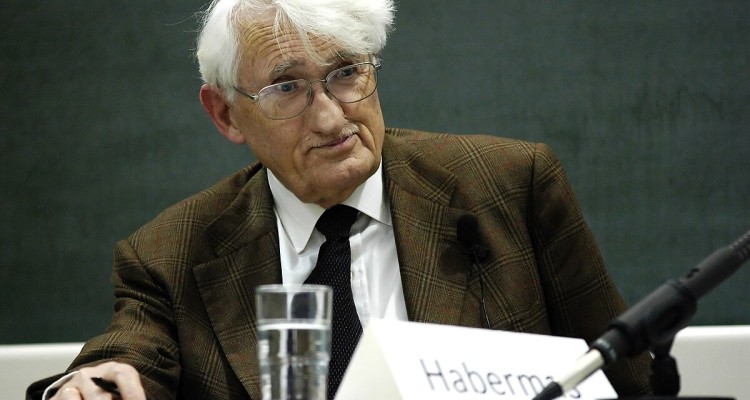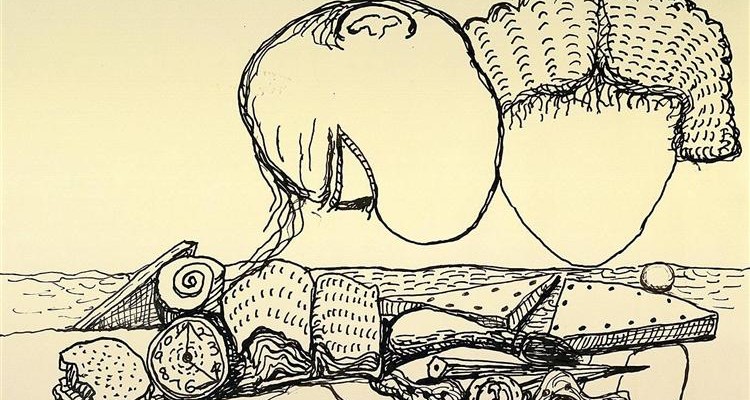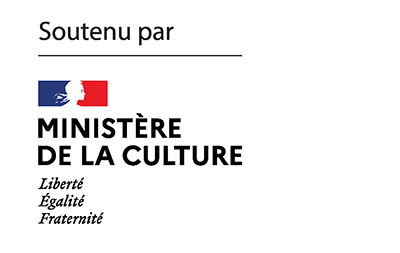In issue 129 of K., we discussed the open letter, entitled “The Elephant in the room”, denouncing the State of Israel as an apartheid regime. The petition was signed by more than 2,500 academics, bringing together, in a combination unthinkable only a few months earlier, committed Zionists and avowed anti-Zionists. We gave the floor to several of our authors, who explained why they had signed even though they did not agree with the use of the word apartheid. The following text is intended to explain why such a characterization is historically and politically inappropriate, counter-productive and the fruit of an absolutely impracticable analogy, unless one wishes to discredit the history and very existence of Zionism in bad faith.

Something is about to change in the critics of Israel. Apartheid, after having been the buzzword of post-Durban anti-Zionism – and after having taken on its distinctly anti-Semitic coloration at Durban, as we have already documented in K. – is seeing its credibility grow in the present context. The appropriation of the term is becoming increasingly easy, as one reluctance after another falls away, spreading across an ever-wider political spectrum. The current government’s policies, and the fears they rightly arouse, are obviously the triggering factors.
The unprecedented right-wing shift in Israeli policy has had this most obvious effect: in official speeches and in certain proven acts – such as the repressive management of zones in the West Bank, the separate doubling of traffic lanes and the securitization of the colonies – the spectre of apartheid seems to be taking on greater reality in the occupied territories. It imposes itself in the mode of “you see, we told you so”. The distinction between an absolutely egalitarian civil administration – which, it should be pointed out, is the norm under the rule of law that Israel still enjoys – and a military administration in the occupied territories, undergoes the blows of the reactionary government. The aim is none other than to break away from historic Zionism, and, as the most radical are quick to put it, to usher in a new era, a “second Israel”. The democratic protest movement has perfectly understood this, thanks to which it has grown in strength, scope and perseverance over the last few months. The breakdown, if it were to occur, would find its fulfilment in annexation, with the risk that any policy towards the Palestinians would be profoundly altered, including within the State of Israel, where Palestinian citizens, who enjoy equality by virtue of their Israeli citizenship and have collective rights, could find themselves impacted.
In any case, the prospect of apartheid – if by this we mean a policy of legal discrimination and domination of one category of citizens over another – is on the agenda, although those who evoke it are not always sure whether the relevance of the category applies to the State of Israel or only to the territories it occupies. This is because the term has taken on a new discursive function: it poses as a global unifier of all current critical voices. A symptom of this was the open letter “The Elephant in the Room” signed by over two and a half thousand academics, mostly Israeli and American. The list is a combination, unimaginable a few months ago, of convinced Zionists and declared anti-Zionists. But there’s no doubt that the very presence of the buzzword, however embarrassing it may have been for some of the signatories – the testimonies recently published in K. speak for themselves in this respect – was a condition for this. More precisely, the Zionist camp, in its clearly left-wing fringe, had to convince itself that the hour was so serious that people’s minds had to be struck as forcefully as possible. Maximum indignation presupposes that differences of opinion, at this decisive moment in the struggle, are temporarily put on hold.
The bottom line is this: the prolonged occupation has paved the way for colonization, which is moving towards annexation. The treatment of Palestinians, both within and beyond the Green Line, is about to change in its guiding principles. In the face of such urgency, an overly fussy casuistry is no longer an option. At the very least, its requirement no longer applies in the face of the expected gain in radicalized criticism. In order to mobilize on what is really at stake in the crisis – the Palestinian question – we should now accept the buzzword and the improbable bridging it achieves between positions that are, at first glance, irreconcilable.
The European difference
It’s not insignificant that the shift was easier for the American and Israeli sides than for the European one, which is unsurprisingly poorly represented in the list of signatories. There are several reasons for this, starting with the margin of intervention in Israeli domestic politics and the legitimacy that is granted without too much difficulty in what is by far the most important diasporic center in the world. But there’s something else, something even more decisive: the ease, in the American case, of centering critical discourse in a category with racial connotations, based on hereditary ethno-biological affiliations.
For this is exactly what the category of Apartheid represents: a relationship of domination instituted between racially qualified populations, a racially justified and controlled political organization. It’s certain that such encoding occurs more spontaneously where racial difference is inscribed in people’s minds as well as in administrative nomenclature, as is commonly the case in the United States. In a country where social conflicts are cast in this mould, in the sense that they are objectively dependent on it and are perceived through it, there is little impediment to projection – even if one must face up to the fact that no such mechanism has ever existed in Israel for the census and identification of individuals, and that the egalitarian attribution of citizenship and the rights that go with it has always been free of such labelling. And with good reason: the dialectic of the “Israelization” and “Palestinization” of Israel’s Arab citizens is the effect of an integration process inherited from multinational political entities such as the Ottoman Empire, the Austro-Hungarian Empire and Russia, whose logic is completely foreign to that of apartheid. In Europe, the conditions for perceiving the problem were quite different. And even more so after 1945. Here, post-Shoah memory has resulted not only in an aversion to, but a prohibition of any institutionally endorsed racial categorization. The result, no doubt, is a more hesitant – and inevitably more “fussy” – appraisal of the category. And, in the end, a refusal to use the category when its most defining element – “race” – is clearly missing.
The birth of the State of Israel and the South African apartheid regime
The same year as the creation of the State of Israel, in 1948, the South African apartheid regime was established. After the Second World War and as the era of decolonization began, it was fundamentally anachronistic. On the basis of a physical anthropology that had been assumed and asserted, and therefore based on racist reasoning, it conferred a stable legal framework on the privileges exercised by a white minority born of the European colonies and the wars that had pitted them against each other in the 19th century, over an inferiorized black, mixed-race and Indian majority. They were kept destitute and subjected to discriminatory and repressive laws, which involved a fixed geographical distribution (achieved by force through massive population movements and ghettoization), the prohibition of mixed marriages, strict regulation of professions, access to public space and goods and services. The 1948 policy was therefore legally sanctioned racial segregation – not only between blacks and whites, but also within the indigenous population.
It’s hard to imagine a more dissimilar situation than that of Israel. That Zionism is a colonial phenomenon and the State of Israel the latest avatar of European colonialism has been the leading argument of anti-Zionists for a long time. Against such a view, it should be remembered that Zionism was essentially a movement of national rebirth, and that it is by this standard – by asking what “nation” or “nationalism” could mean for this particular people – that it should be considered. The fact is, it was not based on any metropolitan power, nor did it seek to plunder local resources or exploit a native population. Its aim was not to build an empire, but to settle persecuted Jews in a place with which their relationship had been maintained over a remarkably long period, and in which an indigenous Jewish community had continually persisted. In its implementation phase, when Palestine was under Ottoman rule and then under British mandate, it did not confiscate any land. It acquired land gradually, and this acquisition was not for economic gain, but only for the sake of those for whom the land was purchased. This continued until the State of Israel obtained its own perimeter, following the UN partition plan of 1947, which was immediately rejected by the Arab side.
The composition of Israel’s population, with its sizeable Arab-Palestinian minority, is the result of the war that followed, a war that Israel in no way intended. During this war of independence, acts were committed by the Israeli victors, with their share of violence, injustice and pressure on the Arab population, but they never took the form of ethnic cleansing, nor did they lead to the segmentation of citizenship according to racial, religious or cultural affiliations. The Declaration of Independence and, subsequently, the Basic Laws of the State of Israel outline the contours of a liberal, democratic, “European-style” State governed by the rule of law, in which, because of its internal diversity, the problem of regulating the rights of the different communities in a multi-cultural society made up of numerous minorities is an acute one.
If we are to see things clearly, we need to emphasize the following: the founding of this state stems from a dynamic of national emancipation – “self-emancipation”, as the early Zionists called it. However reprehensible the achievements of the Zionist movement and the subsequent political conduct of the State of Israel may be, easy shortcuts obscure this point: the conflict between Jews and Palestinians has been a national one from the outset. This conflict is in no way racial. It began with the separation of 1949, which gave rise to a modern, integrated state of free and equal citizens, with a Jewish majority and minorities including the Palestinian Muslim and Christian minority – minorities each enjoying collective rights. Nevertheless, the original national conflict remains the country’s fundamental cleavage. It has a latent religious dimension, and it is one aspect of the crisis that this latency is now fading, as religious Zionism asserts its position of strength. And it also has a dimension that has to do with the status of the majority of Jews in this State: And it also has a dimension that has to do with the majority status of Jews in this state: In the current crisis, Israel has been called upon to undertake a radical self-examination; as such, the national conscience cannot turn a blind eye to the history of the Palestinian minority and the real conditions of its integration – with its initial trauma rooted in the defeat of 1949, its long-term repercussions, the inequalities and discrimination linked to the asymmetry of the majority-minority relationship against a backdrop of permanent conflict, but also the transformations resulting from its de facto membership to Israeli society and the social mobility inevitably brought about by the formal legal equality it enjoys.
After 1967 and Oslo
But since 1967, with the second Arab defeat following a war again unwanted by Israel, resulting in the placing under military administration of another part of the Palestinian people living outside, the situation has taken on a new dimension. This group is not, and never has been, a minority within the state, but a population which, prior to the 90s, was captured under the category of the enemy defeated and temporarily held under control, and then, through a reversal officially endorsed by both parties as a result of the Oslo Accords, as a national body engaged in a process of autonomous state-building, subject to the abandonment of hostilities on both sides in all their forms.
However, nothing of what was envisaged in Oslo has materialized. Over the past three decades, the hostility has not simply continued, it has intensified. It has to be said that the two-state solution, whose main consequence was to entrench on the Palestinian side a process of autonomous state-building supported by various international players – including Europe – was from the outset marred by the fierce rejection of extremist attacks on both sides, whose actions went as far as executions, targeted attacks and indiscriminate bombings.
The result has been not just a stalling of the process, but its gradual erasure. The “two-state solution” has become a watchword that progressives occasionally invoke as a regulating ideal, but which they know to be more and more distant from the political acts it is supposed to control. As for the attribution of respective responsibilities in this evolution, it obviously varies according to the positions one occupies and the causes one defends. What matters is the result: the weakening of those most committed to driving and maintaining the process, whose two major expressions were the electoral victory of Hamas in Gaza in 2007, after the Israelis had withdrawn completely and dismantled their settlements two years earlier, and the erosion in Israel of a camp in favour of territorial compromise, heir to the socialist or liberal Zionism that dominated the state’s political culture until the late 1970s.
The current situation is a result of all this. And as the “two-state solution” has vanished into thin air or escaped into abstraction, criticism of Israeli policy has been won over by the Apartheid motif. There’s nothing inexplicable about this correlation. If the two-state solution makes sense, it’s as a way out of a national conflict. On the Palestinian side, the act of recognizing the existence of the State of Israel – or of declaring “null and void” the desire to destroy it, which took the place of recognition – was simply the other side of the self-affirmation as effectively aiming for a state. In so doing, we remained within the classic dynamic of the affirmation of the right of peoples to self-determination, initiated in Europe by the principle of nationalities in the second half of the 19th century, and renewed and globalized with decolonization. The Palestinians, represented by the PLO, were part of this movement. In this phase, the argument of race was not at all a core issue: it was embedded in political reasoning, where it may well have played a part in denouncing the illegitimate power of the oppressor, but where it was not a determining factor with regard to the final goal. At no point did it positively guide action.
The South African difference: what apartheid really means
By contrast, South Africa’s Apartheid regime was a very specific form of construction, the result of a colonial settlement policy with a long history. This peculiarity has been under-recognized, and needs to be addressed. “Apartheid” is a word intentionally chosen by those who promoted it: it is the Anglicization of a term from the colonies of the French Huguenots – it translates “apartité”, wanting to live apart -, and was therefore explicit in the fact of consciously seeking separation, considering that this is justified and founded by the distinction of racial characteristics, i.e. fixed and naturalized determinations. This was what made the regime constitutively racist. What is not sufficiently emphasized, however, is that this was in fact an anomaly. Indeed, while the prevalence of racism is a permanent feature of colonial policies, it does not follow that it always had a constitutive or constitutional role. Not even the special regimes designed during the golden age of colonization are based on a racial criterion. If we look at the major examples of French and British colonization, we see that the separate statuses invented for “natives” or “indigenous peoples” were generally based on other criteria.
More often than not, the means employed was an amalgam of criteria of religious and cultural affiliation, without the strictly racial dimension being an overriding factor. These ethno-cultural distinctions – and bearing in mind that reference to “ethnicity”, an anthropological notion referring to a community of descent where the cultural and the physical interfere, sometimes carries with it biologizing presuppositions – served effectively to exert domination over the colonized; they were underpinned by a keen sense of hierarchy, and enabled the unequal social and political order to function globally. Racism, by which we mean discrimination and oppression based on phenotype or on the ascription of inherited natural inferiorities, undoubtedly found a fertile breeding ground here, but it was not the mainstay of population management. It was combined with separation strategies based on other principles.
It should be emphasized here that the colonization of sub-Saharan Africa stands out, with its slavery-like dimension, the systematic inferiorization of black populations who were exploitable at mercy, and their reduction to instruments and reservoirs of productive forces in the system set up by the colonizer. In this case, the racialist perspective comes into its own. Over the long term, South Africa has certainly been imbued with it. The Apartheid regime declined colonialism by relying exclusively on racial distinctions and elevating them to the status of organizing principles, with a rigor and scrupulous precision more reminiscent of Nazism than of the most common forms of modern European colonialism. Significantly, from the early ’50s onwards, Apartheid had to find a way to accommodate what then looked like concessions to the ethno-cultural empowerment of indigenous populations. It thus created autonomous enclaves called Bantustans, hoping to divide citizenship into a South African citizenship reserved for whites – in territories where they then became the majority – and other citizenships corresponding to defined territorial and tribal affiliations. In this way, the regime maintained the fiction of independent states, while dominating them and turning them into reserves of cheap labor. But nobody was fooled. In this system, the inertia of the racist organization was ever-present. As such, it did not rely on any territorial basis, reproducing segregation wherever it could be deployed. This is what made the Bantustan tactic impractical and illegitimate in everyone’s eyes.
This explains the awkward position South Africa found itself in with regard to the decolonization process that began in the post-war period. Insofar as it was based primarily on ethno-cultural identities that were already structuring the colonized societies, colonial domination left the dominated populations with the means to recognize themselves as belonging positively to a distinct group, characterized by its own internal social structure, history, religion and customs. However artificial and arbitrary the colonial ideology may have been, the separation was based on the lived reality of the colonized populations and their self-understanding of their identity. The result was a status of relative autonomy, from which the demand for independence and the impetus to form a new nation could emerge. In short, decolonization was generally synonymous with national emancipation. But this had one essential consequence: it inevitably implied the departure of the foreign colonizers. Separation inevitably took on the strong meaning of expulsion, including in the case of settlements with a high degree of formal inclusion in the metropolitan state, such as the French departments of Algeria.
But the purely racial separation of South Africa made this impossible. So the struggle took on a completely different face. It was not waged under the auspices of the right of peoples to self-determination, but as an anti-racist struggle aimed at the collapse of a constitutive racial order – the most revolting for this reason since Nazism, whose shadow inevitably loomed large. But there was another, in some respects more direct, comparison to be made: with the southern states of the United States before 1964, when Jim Crow laws were still in force and lasted almost a century. The abolition of the system had the same outcome: not the separation of the emancipated group by expulsion of yesterday’s oppressors, but the reconfiguration of global society according to new principles. As with the end of the Apartheid regime in South Africa, ratified by the abolition of the racial laws (and the abolition of the Bantustans a few years later, an event that failed to attract much attention), the dismantling of segregationist measures against black Americans did not logically lead to the departure of the dominators. Neither in the U.S. nor in South Africa was such a measure politically relevant to the situation. In the course of the conflict, the dominators were not seen as a caste of foreigners to be driven out, but as a social stratum forming part of a totality that had to be completely reshaped. In developments of this kind, the transformation of the state is based on a reconfiguration of the national body, moving from an oppressive hierarchy to egalitarian legislation, thus conforming to the requirements of a modern nation, which is the frame of reference for a democratic nation-state. Precisely insofar as it was based on the racial element, the oppressive hierarchy was at the heart of a conflict of integration rather than a genuine conflict of separation, as was the case in the more classic colonial situation. Or, to put it another way: insofar as the separation had been constructed racially, and not ethno-culturally, we found ourselves engaged in a new kind of integration, in which it was no longer a question of separating, but where populations remained present in their diversity on the same territory, in which the aim was to ensure the triumph of egalitarian legislation.
Racial conflicts are not the kind of national conflicts that formed the major fabric of decolonization. When, as in the case of South Africa, they are part of the history of colonialism, they do so in order to draw a singular path, where the issue is not so much the right of peoples to self-determination, as the right of individuals to equal treatment and universal recognition and respect. The aim of these conflicts is therefore the recomposition of the “nation” collective on the basis of individual equality – something that institutionalized racism, based on naturalized differences, is in fact a radical denial of.
An impractical racialist reading
Let’s return to the subject of our discussion. Israel, too, obeys a singular destiny. As we have said, although its birth took place against the backdrop of the dissolution of an empire, the Ottoman Empire, relayed by the British dominium, the Jewish and Arab national claims that confront each other are not part of a relationship between colonizers and colonized. It is a national, non-racial and non-colonial conflict, with the protagonists constituting themselves respectively as consistent collectives according to ethno-cultural criteria, underpinned by background religious determinations. This is why it’s so difficult to describe and approach, as if we had to constantly conjure up the projections that are jostling for our attention. These are all the more cumbersome because they come from two distinct focal points: the classic colonial one (with the ethno-cultural asymmetry justifying domination) and the non-classical colonial one, which practically holds sway only through the South African hapax, of a racial conflict destined to be resolved in a process of integration, where what is essentially at stake is the recognition of the universal rights of individuals.
These clarifications are necessary in order to produce a reliable diagnosis of the conflict as it has unfolded in the past and as it is still unfolding in the present, but also of the state of the critical discourses through which this conflict continues to be recoded. The preferential use of the term “apartheid” in relation to the Israeli-Palestinian conflict – as anti-Zionists have sought to do since Durban, and as is more widely used in criticism of Israel’s reactionary policies today – gives the real situation a very specific twist. The classic discourse of the PLO, and the support it had found in the post-war Third Worldism of the European lefts, had relied on an entirely different twist, which went in the opposite direction: it involved describing the national conflict as a colonial conflict that it was not. Discrediting Zionism was supposed to follow – and the goal was largely achieved. But, right or wrong, at least the judgment was right about the national dimension of the conflict. This is why the Palestinian demands had finally found their most credible outlet in Oslo: since the conflict was political in the sense that it concerned two peoples entitled to demand their autonomy, it had to lead to a process of separation, the re-foundation of two distinct nations, each giving itself its own state. The Jews had already proved that they wanted it, doctrinally and materially. Among them, after the Shoah, the pro-State forces had prevailed, and even the non- or anti-State forces of yesteryear were basically paying them tribute. This Jewish consensus was recomposed into a Zionism based on a sort of minimal credo, flexible enough to be shared on the essentials, i.e., united around the fact that people were committed to the existence of the now real Jewish state. On the Palestinian side, the same kind of proof remained to be produced, and with it the clarification of what they really wanted in terms of a state, since it was admitted that they really wanted it. We must never forget that a state is not a hollow form or a purely formal device of power and administration: it’s a way for political collectives to act upon themselves. In modern times, it is the action that a nation takes upon itself, where it reflects what it is, the idea it has of itself and the identity it gives itself. The Palestinians, no more than any other people, cannot escape the need to conceptually and practically fulfill their desire for a state in this way.
The meaning of a Jewish state (what “Jewish” means when it correlates with “state”, and what “state” means when it correlates with “Jew”) is still the subject of bitter debate, but at least the issue is built on a foundation that everyone can touch. This is not the case for the Palestinians, for whom the proto-state politicization movement has remained suspended, the struggle having rapidly taken on a different face in recent decades.
In view of this twofold dynamic, and as asymmetrical as it may be, the racialist reading is inaccurate. Obviously, this does not mean that there cannot be expressions or behaviors that border on racism. They consist in systematically devaluing the opposing collective, considering it as a block and without distinction, in order to condemn it to detestation, with no regard either for the individuals who make it up, or for the divisions and conflicts that run through it. The outbursts by Ben Gvir, the current Minister of the Interior, about “the Arabs”, or, in the other direction, those of Hamas reviling “the Jews”, are entirely of this kind, and rightly arouse indignation. That said, it’s important to hear exactly what they’re saying. Although uttered by an Israeli Jew of Iraqi origin, Ben Gvir’s eructations sound to our ears racist in the colonial sense of the term, while the word “Jew” as used by the ruling party in Gaza, although originating in political Islamism, resonates with tropes characteristic of European anti-Semitism.
The rise of the apartheid rhetoric is the most telling symptom of the failure to return to this level of reality. The intention is clear: the hope is to inflict severe reputational damage on Israel, and thus trigger severe international sanctions – the boycott, with all its consequences. But in doing so, do we realize the damage we are causing – unless we are merely confirming and endorsing it, which is more likely – on the Palestinian side?
By framing the conflict in a racial way, we move away from a well-understood national conflict, insofar as it may be legitimate and well-founded in both Palestinian and Israeli claims. And we lose sight of what made Oslo possible, namely taking charge of the process of separation and respective self-constitution of the two peoples, which had finally been clearly formulated. Is this the effect of the evanescence and increasing abstraction of the “two-state solution”, following thirty years of failures, violence, attacks, repression, aggression and colonization? We might add, failures for which those responsible are singled out in different ways, depending on the point of view one occupies and defends. Perhaps, but that hardly matters at this point. Whatever the diagnosis, the result remains the same: for the Palestinians, the politicization of the conflict and the formulation of the goal pursued, using apartheid as an example, is a clear failure. Those who claim to be on their side, comforting them in the illusion that this is the right way to read the situation, are in fact only contributing to it. A disarray that corresponds to a depoliticization, or an attempt at repoliticization, which is essentially ill-adapted to the case.
How, then, are we to get back on track and get somewhere? No doubt the solution to achieve a decoupling of the terms of the problem, where the conflict moves towards its resolution, is highly difficult to imagine today. While it’s clear that the two-state solution is no longer on the agenda, it’s no easier to see what might replace it. That’s why, even if it’s no more than a mantra, the nominal invocation of Oslo persists among the best-intentioned. As for the imagination of other solutions, it is still being tried out here and there. Some take up the binational state solution once defended by a fringe of the Zionist left, but find themselves grappling with contradictions that have only grown with time; others try to conceive of a federal or confederal configuration, topped by a formal state with reduced prerogatives; still others think of a de-statization of the entire area, with attachment to a supra-national body… These are the kinds of discussions we need to be able to conduct freely, armed with the two indispensable virtues in this case: probity and realism. This is what the Apartheid grid blocks from the outset, by distorting and misrepresenting the very structure of the conflict.
It is significant that today, America and Israel, the two largest Jewish centers in the world, are particularly affected by this visual distortion. It is up to Europeans, on the other hand, to make their voice fully heard on this point, and to deliver what is more spontaneously available to their gaze. It is up to them to make visible the true veins of the situation, the lines that structure it in Israel itself. And in so doing, to relaunch the analysis needed to make political action possible once again.
Bruno Karsenti and Danny Trom










